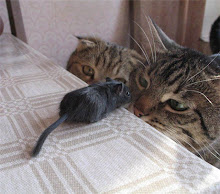2009년 3월 4일 수요일
2007년 9월 2일 일요일
2007년 9월 1일 토요일
날짜별 학습 진행 상황 - 수능영어
날짜별 학습 진행 상황 - 수능영어 [riemann]
| 날짜 | 출제 문항 수 | 맞은 문항 수 | 백분율 점수 |
|---|---|---|---|
| 2007-09-02 | 50 | 48 | 96 |
| 2007-08-31 | 53 | 48 | 90 |
| 2007-08-30 | 44 | 41 | 93 |
| 2007-08-29 | 34 | 33 | 97 |
| 2007-08-27 | 33 | 26 | 78 |
| 2007-08-25 | 42 | 35 | 83 |
| 2007-08-24 | 37 | 35 | 94 |
2007년 7월 1일 일요일
곱셈법4
Using VERTICALLY AND CROSSWISE you do not need to the multiplication tables beyond 5 X 5.
- Suppose you need 8 x 7
8 is 2 below 10 and 7 is 3 below 10.
Think of it like this:
The answer is 56.
The diagram below shows how you get it.
You subtract crosswise 8-3 or 7 - 2 to get 5,
the first figure of the answer.
And you multiply vertically: 2 x 3 to get 6,
the last figure of the answer.That's all you do:
See how far the numbers are below 10, subtract one
number's deficiency from the other number, and
multiply the deficiencies together. - 7 x 6 = 42
Here there is a carry: the 1 in the 12 goes over to make 3 into 4.
Here's how to use VERTICALLY AND CROSSWISE for multiplying numbers close to 100.
- Suppose you want to multiply 88 by 98.
Not easy,you might think. But with
VERTICALLY AND CROSSWISE you can give
the answer immediately, using the same method
as above.Both 88 and 98 are close to 100.
88 is 12 below 100 and 98 is 2 below 100.You can imagine the sum set out like this:
As before the 86 comes from
subtracting crosswise: 88 - 2 = 86
(or 98 - 12 = 86: you can subtract
either way, you will always get
the same answer).
And the 24 in the answer is
just 12 x 2: you multiply vertically.
So 88 x 98 = 8624
Multiplying numbers just over 100.
- 103 x 104 = 10712
The answer is in two parts: 107 and 12,
107 is just 103 + 4 (or 104 + 3),
and 12 is just 3 x 4. - Similarly 107 x 106 = 11342
107 + 6 = 113 and 7 x 6 =42
곱셈법3
An elegant way of multiplying numbers using a simple pattern.
- 21 x 23 = 483
This is normally called long multiplication but
actually the answer can be written straight down
using the VERTICALLY AND CROSSWISE
formula.We first put, or imagine, 23 below 21:
There are 3 steps:
a) Multiply vertically on the left: 2 x 2 = 4.
This gives the first figure of the answer.
b) Multiply crosswise and add: 2 x 3 + 1 x 2 = 8
This gives the middle figure.
c) Multiply vertically on the right: 1 x 3 = 3
This gives the last figure of the answer.
And thats all there is to it.
- Similarly 61 x 31 = 1891
- 6 x 3 = 18; 6 x 1 + 1 x 3 = 9; 1 x 1 = 1
Multiply any 2-figure numbers together by mere mental arithmetic!
If you want 21 stamps at 26 pence each you can
easily find the total price in your head.
There were no carries in the method given above.
However, there only involve one small extra step.
- 21 x 26 = 546
The method is the same as above
except that we get a 2-figure number, 14, in the
middle step, so the 1 is carried over to the left
(4 becomes 5).
So 21 stamps cost £5.46.
33 x 44 = 1452
There may be more than one carry in a sum:
Vertically on the left we get 12.
Crosswise gives us 24, so we carry 2 to the left
and mentally get 144.
Then vertically on the right we get 12 and the 1
here is carried over to the 144 to make 1452
곱셉법2
Multiplying a number by 11.
- 26 x 11 = 286
Notice that the outer figures in 286 are the 26
being multiplied.And the middle figure is just 2 and 6 added up.
- So 72 x 11 = 792
To multiply any 2-figure number by 11 we just put
the total of the two figures between the 2 figures.
77 x 11 = 847
This involves a carry figure because 7 + 7 = 14
we get 77 x 11 = 7147 = 847
234 x 11 = 2574
We put the 2 and the 4 at the ends.
We add the first pair 2 + 3 = 5.
and we add the last pair: 3 + 4 = 7.
